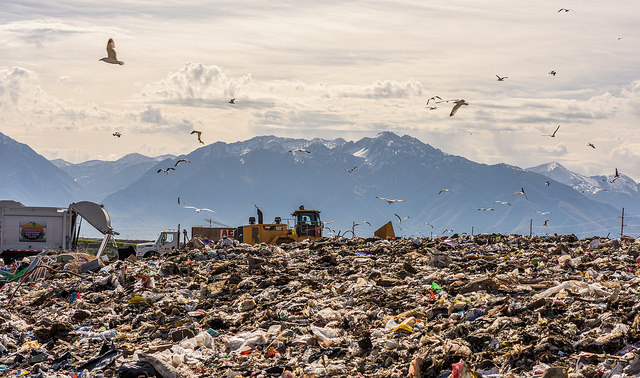Why durability matters (or, how the throwaway lifestyle is hurting all of us)
Modern society is all about convenience. We want to buy things that make our lives easier. It’s why grocery store shelves are lined with instant coffee and freezer meals. It’s why plastic spoons and forks are stocked to the brim at fast-food restaurants. It’s why newer, better versions of phones are released seemingly every month. Products are manufactured to be convenient, but that often results in low-quality products that break down rapidly. Today’s products aren’t durable, and this has negative implications for each of us individually, as well as for the world as a whole.
Let’s start with ourselves
You probably know where this is ultimately heading—right to sustainability and protecting our environment. Whether you’re a dedicated environmental advocate or someone who is sick of hearing about sustainability doesn’t matter right now, though. The fact is, when you don’t buy durable products, you’re hurting yourself.
Everyone likes to save money. Money allows you to buy a new pair of shoes. Money allows you to take an impromptu trip to the Caribbean. Money allows you to always say “yes” to guacamole at Chipotle without even thinking about it.
Sometimes, though, it’s hard to think about saving money in the long-term. When you’re at the grocery store and you’re comparing prices, you’re thinking about the money you’ve currently got on hand. Why buy a more expensive product when there’s a perfectly good one right next to it for a dollar less? Sometimes cheaper is better. You don’t necessarily need the name-brand salt to make it through life. The 99 cent off-brand will do just fine. Salt is salt, after all.
But sometimes, the more expensive product is a better option, at least in the long run. You can either buy the $30 jacket that will wear out and rip after a few wears and washes, or you can buy the $200 jacket that will last for 10 years or more. You can buy the cheap but cute iPhone case that doesn’t actually protect your phone, or you can drop a hundred dollars for a LifeProof case that lets you keep that baby working even in the shower.
Does it cost more up front? Of course. And that’s a hard pill to swallow. We get it. But consider the long-term savings: That jacket may be $170 extra initially, but the $30 jacket will wear out each year. In ten years, you’ll have spent $300 on new jackets, while the more expensive one will still be in great condition. It’s all about the long term.
Durable products save you money.
And there’s that other thing—our environment
Right, so there’s also the tiny fact that we’re running out of places to put our one-and-done products. Literally. Now, if you’re one of those people who had it with all of this environmental talk, just try to hear us out.
Think about it. Once you buy a new jacket, Plavix where does the old one go? In the trash. Where do all of those used plastic forks go? Against our best wishes that they be recycled, most end up in the trash. The old phones? The sunken couches? The broken sunglasses? Trash. Trash. Trash. And where does all of this trash go? To a landfill, where it piles up and eventually gets buried underground. Out of sight, out of mind, right?
Wrong.
First, much of that waste doesn’t decompose due to a lack of moisture and oxygen, meaning it sticks around for decades—right under the ground on which you tread. You could quite literally be sitting on a pile of trash at this very moment.
Second, when much of that waste does decompose, it often produces methane and carbon dioxide, two disastrous greenhouse gasses.
What’s more, we’re running out of space for landfills. We’ve buried too much trash underground, and there’s nowhere else to put it. While, currently, very poor neighborhoods reside on landfills—resulting in dangerous living conditions there as a result of the chemicals given off—with the continuation of this throwaway lifestyle, many more neighborhoods—not just low income ones—may soon be built on these landfill sites.

Geoff Livingston, Seagulls Descend Upon the Trans-Jordan Landfill via Flickr.
That’s right: This trash won’t be out of sight, out of mind for much longer. Smelly and dangerous living conditions could be coming to a neighborhood near you, soon.
So why buy durable?
You can do it for yourself or you can do it for others. It doesn’t matter what your motive is. Whether you want to save money for that sweet summer vacation or you want to keep our landfills underground, buying durable products is a better option.
That’s why, at Shield, we build products that last. We care about your bank account as much as we care about your safety—and our safety, too. We want to save you money, and we want to protect our world. That’s one reason we build with solid surface. Solid surface is guaranteed by most companies to last at least ten years. It’s extremely durable, as well as resistant to water, heat and chemicals. It’s easily repairable and simple to clean, so it continues looking new year after year. It lasts.
One of our absolutes is “Leave the world better than we found it.” We care about the world we live in, and we care about you. We want to leave a better world for the next generation, and one of the ways we do this is by building durable products. That’s why durability matters.
So why buy durable? When you buy durable products, you show that you care about you, too. When you buy durable products, you don’t just save a little bit of money; you save a little bit of the environment.




Is mass-production killing craftsmanship? | Shield Casework | Dec 31, 2015 at 5:43 pm
[…] with little use. Those ripped jeans and broken couches end up in the already-overfilled landfills, putting our environment in danger. Of equal concern is the vitality of craftsmanship. If people can buy their goods for half the […]